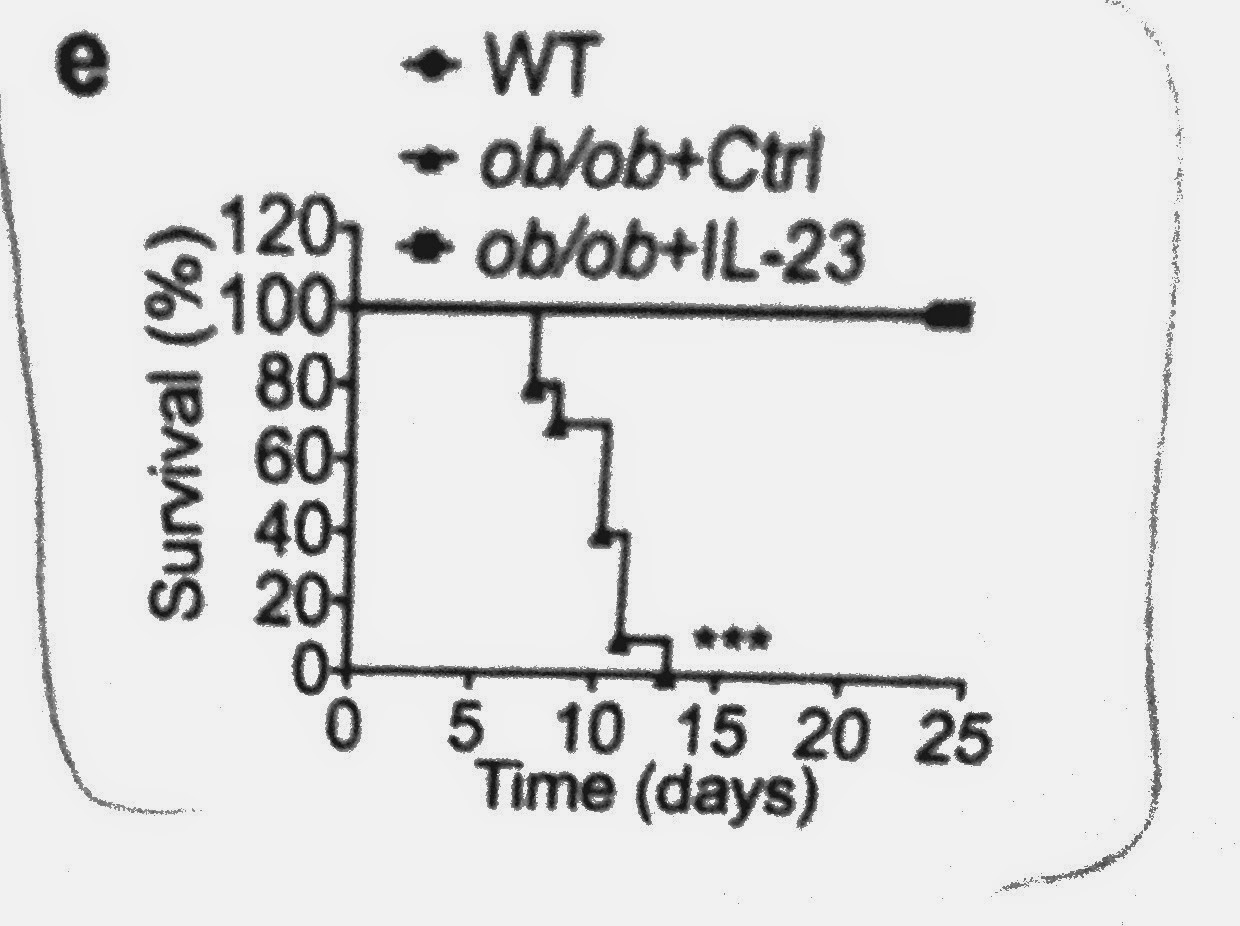One way to determine if a
research article published in prestigious journal comes with many
“holes” is to look at its submission and acceptance time. If it
is more than 6 months, it is highly likely an article is of low
quality.
Here is one example of
such article (1). It was published, after more than 1 year of review process,
in most prestigious journal Nature and came from famous biotech
company Genentech.
You may wonder why
Nature has published it? No idea.
This study focused on
IL-22 and its role in metabolic syndrome, like obesity or defense
against intestinal inflammation.
First, the authors
showed that obese mice (ob/ob, db/db, or HDF) express less IL-22
compared to wild-type or lean mice.
Second, obese mice due
to leptin signaling defect (ob/ob and db/db) were shown to be more
susceptible for intestinal inflammation caused by C. rodentium that
could be reversed by IL-22-Fc or IL-23 injections. The authors
speculate that IL-23 was upstream of IL-22 signaling in this model,
without providing any evidence.
Third, the authors
switch to metabolic syndrome and observed that IL-22-Fc injection
improves insulin sensitivity and blood glucose level.
Fourth, the authors
suggest that IL-22-Fc injection improved symptoms of metabolic
syndrome (weight loss, less food intake, increased gut barrier
integrity, increased secretion of anorexic hormone PYY).
Finally, the authors
showed that IL-22-Fc improved fat metabolism through its effect on
liver cells and adipocytes.
However, experiments
were complicated by the fact that IL-22KO and IL-22R1KO mice had
different phenotype due to the fact that IL-22R1 can pair with other
receptors (IL-10R2 and IL-20R2) and signal with IL-20 and IL-24.
In summary, the authors
suggest that reduction of IL-23 driven IL-22 expression leads to
alteration in proper fat metabolism in the liver cells and adipocytes, weakening of gut barrier integrity and chronic LPS presence in the
blood stream, all resulting in obesity and metabolic syndrome
development (insulin resistance).
Now, some thoughts to consider. First, are IL-22KO mice obese? Second, does
injection of IL-23 rescue ob/ob mice on IL-22KO background?
David








No comments:
Post a Comment